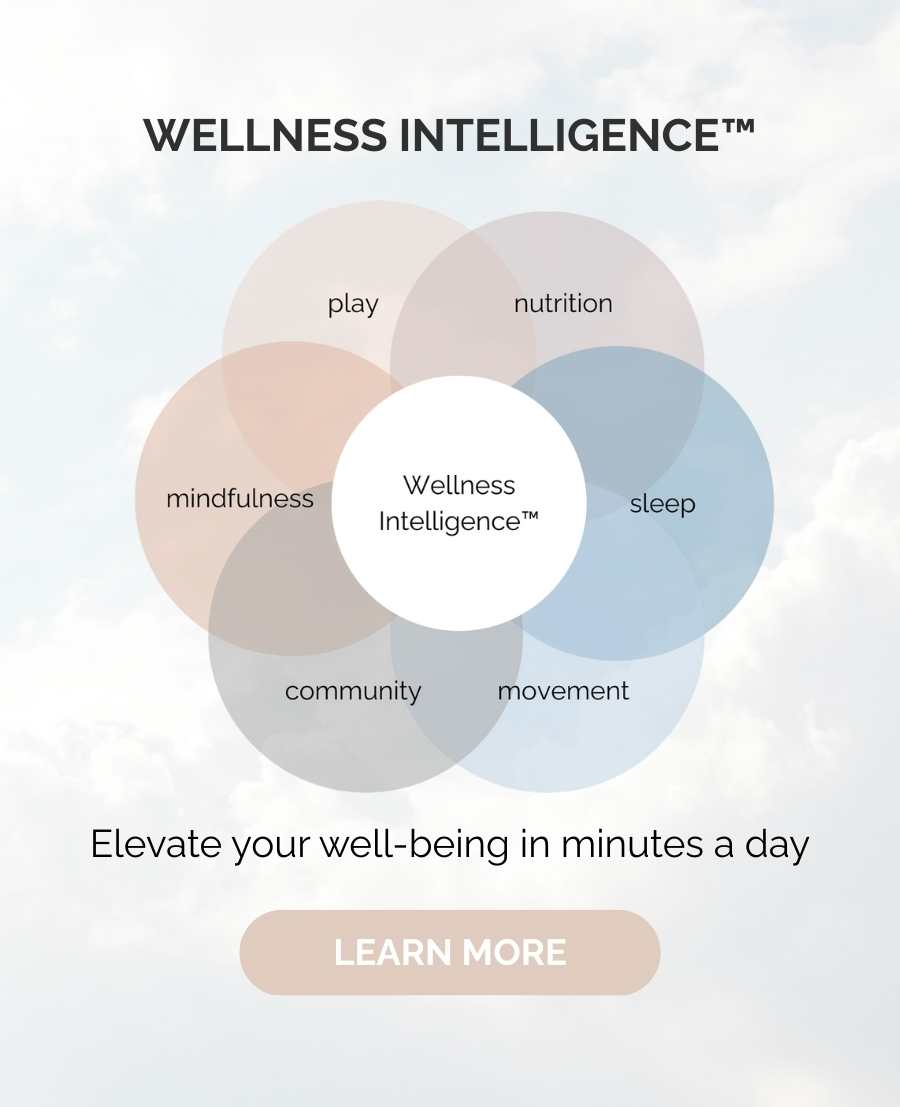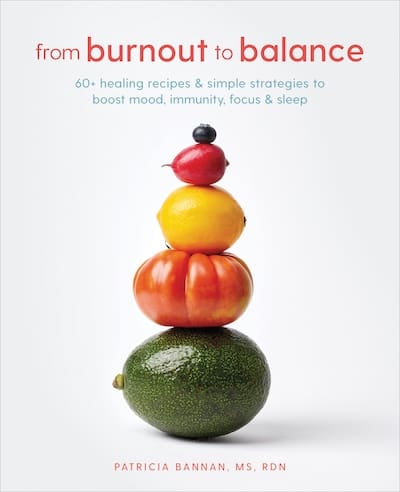During the biggest life transitions, our wellness routines are often the first thing to fall away. Here’s how to bring in self-care.
Last month, I found myself caught in what I now refer to as my “perfect storm” of transitions. I was in the middle of launching a new program for my business, juggling work travel while caring for my sick child and helping my father navigate a complex surgery—all within a crazy three-week period.
Amid this chaos, I was advising my Wellness Intelligence™ clients on maintaining their health habits through life changes. That’s when I realized I needed to revisit my own strategies—specifically, the 3-S Framework that has supported many busy professional women in keeping up their health habits, even during their most challenging seasons.
Reprioritizing Well-Being During Transitions
One morning, as I reached for my third cup of coffee instead of lacing up my neglected running shoes, it dawned on me: I was succumbing to the very pitfalls I coach against.
As a registered dietitian specializing in helping female executives elevate their well-being, I recognize that our health habits are often the first casualties of major life changes.
Yet, it is during these transitions that our well-being needs to be prioritized the most.
Deloitte’s 2023 Women @ Work Report reveals that 82% of women identify increasing levels of workplace stress, significantly higher than their male counterparts. This stress only compounds when we add personal life transitions to the mix.
Unique Transitions in Women’s Lives
The challenges professional women face during transitions are distinct, often managing multiple significant changes simultaneously.
Recent studies, like McKinsey’s 2023 Women in the Workplace report, reveal that 43% of women leaders are experiencing burnout, compared to 31% of men at the same level.
- These transitions frequently include career shifts, with women being 30% more likely than men to consider downshifting their careers during major life changes.
- They also involve returning to work after maternity leave, where 75% of new mothers report increased stress about work-life integration.
- Women also disproportionately manage caregiving responsibilities, as we’re still 1.5 times more likely than men to provide care for elderly parents while managing our careers.
When It’s Time to Put Yourself First
I recently spoke with Beverly Scott, MHROD, ACC, a transition coach for leaders and founder of Get Curious, Inc., who noted that women leaders often excel at managing change for their teams but struggle to apply the same strategic approach to their personal well-being.
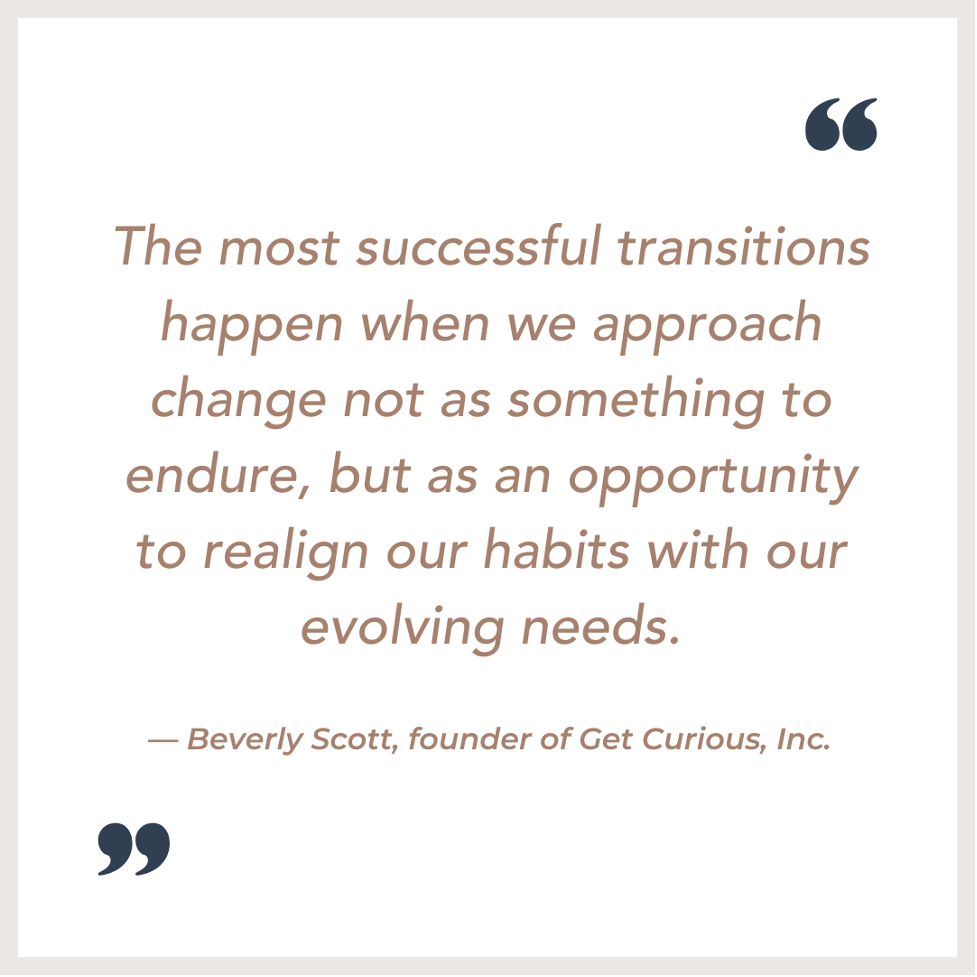
This resonated deeply with me—we’re often better at taking care of everyone else’s oxygen mask before securing our own.
The Hidden Impact of Change
Life transitions create significant physical and emotional stress.
According to the Holmes-Rahe Life Stress Inventory, events like divorce (73 points out of 100) and personal illness (53 points) score high on the stress scale.
Even positive changes like marriage (50 points) or a major career achievement (28 points) carry substantial weight.
Difficult Transitions My Clients Have Experienced
For the executive women I work with, these transitions rarely happen in isolation.
I remember working with Sarah, a CMO who was leading a major company expansion while managing her father’s health crisis.
Or Jennifer, who was navigating a promotion during a cross-country move with two teenagers at home.
What makes these situations particularly challenging is that our bodies don’t distinguish between “good” stress and “bad” stress. They respond to all change with the same physiological reactions: elevated cortisol, disrupted sleep patterns, and compromised immune function. This compounding effect makes it crucial to protect our well-being during times of change.
The 3-S Framework for Lasting Change

And that’s where the 3-S Framework comes in. In my practice at Wellness Intelligence™, I’ve developed a practical approach to creating wellness habits that stick, even during life’s biggest changes.
This framework has helped hundreds of busy professionals maintain their health despite demanding schedules and major life transitions.
1. Self-Compassion: Transforming Your Inner Dialogue
Self-compassion significantly impacts our stress response by engaging the parasympathetic “rest and digest” system.
In contrast, our inner critic often triggers the sympathetic “fight or flight” response, exacerbating stress during transitions.
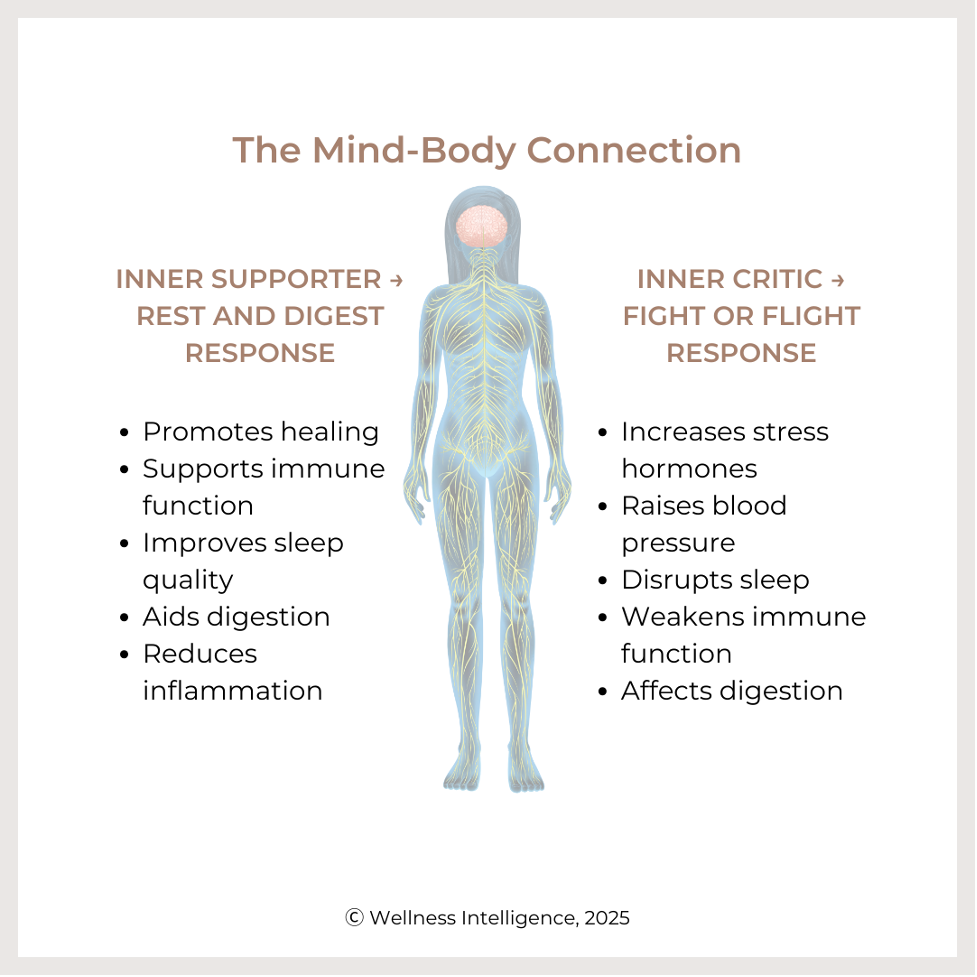
In my own life, I’ve had to consciously work to quiet my inner critic. After recently missing three workout sessions, my initial thought was, “I’ve completely fallen off track—how could I let this happen?”
With practice, I’ve learned to transform that thought to: “My body is adjusting to a lot of change right now. What kind of movement would feel supportive today?”
The impact of our internal dialogue goes far beyond our mindset—it affects our entire physiology.
Research shows that our thoughts influence everything from our stress hormones to our immune function, making self-talk a powerful tool for both mental and physical well-being.
Examples of Self-Talk for Self-Compassion
I guide my clients through this three-step process of reframing an unsupportive thought to a supportive thought, and then into an affirmation:
- From: “I should eat healthy” To: “I get to choose what I eat” Affirmation: “I nourish myself with foods that energize me”
- From: “I should be doing better” To: “I am doing what I can right now” Affirmation: “I trust my journey and timing”
- From: “I need to do it all” To: “I choose what deserves my energy” Affirmation: “My well-being is a priority”
What makes this reframing so powerful is that it shifts us from a place of obligation and potential failure to a place of empowerment and choice.
When we feel we have agency over our wellness choices rather than seeing them as burdensome “shoulds,” we’re much more likely to maintain them even during challenging times.
2. Support Systems: Your Network of Strength
Deloitte’s research indicates that over 40% of women face health challenges in silence, particularly during major life transitions. While women are often expert support-givers, many struggle to receive support.
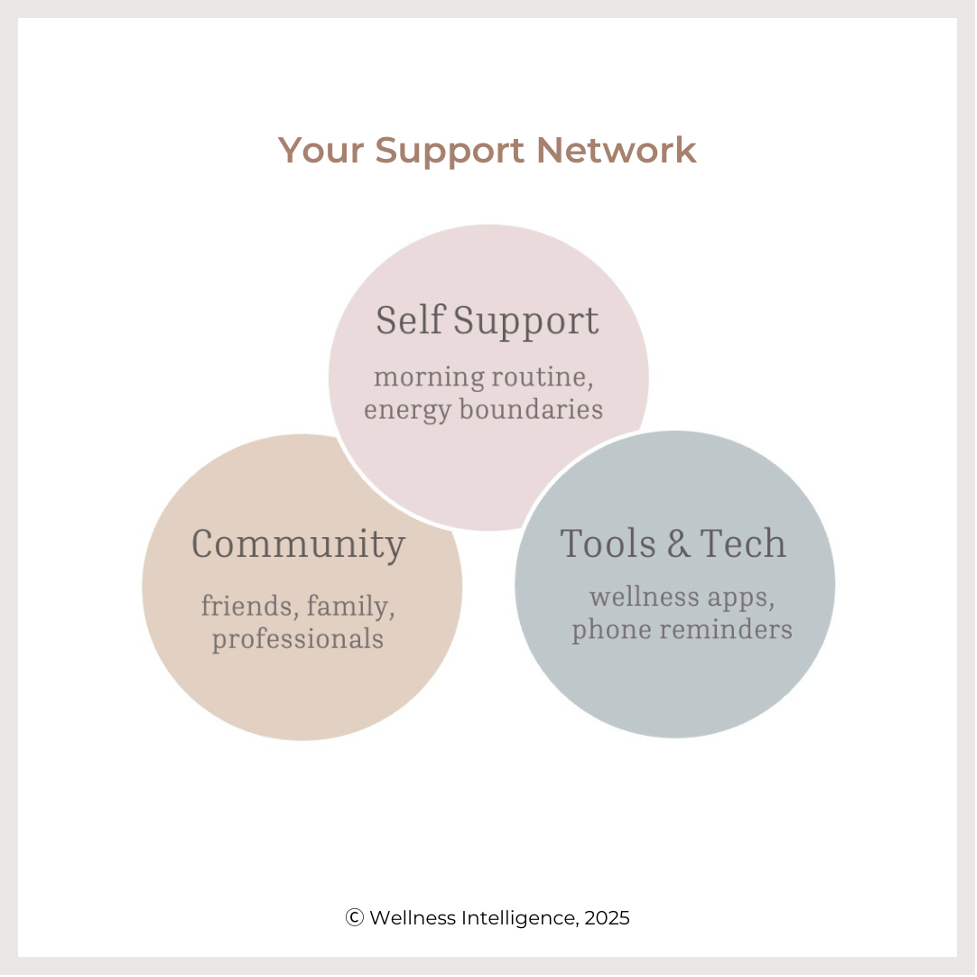
I’ve been guilty of this myself—powering through stress and overwhelm rather than activating my support network.
During my recent “perfect storm,” I initially tried to maintain the appearance that everything was under control. It was only when I finally reached out to a colleague to reschedule some commitments that I realized how much unnecessary pressure I’d been putting on myself.
I encourage my clients to build support across three key dimensions.
Self-Support
This foundational layer involves creating structures that honor your well-being.
This might mean establishing a morning routine that energizes rather than depletes you, setting clear energy boundaries around your time, or creating “non-negotiable” wellness practices that anchor your day.
For me, it’s a 10-minute morning meditation and at least 64 ounces of water daily—simple practices that remain feasible even during hectic periods.
Community Support
Build a strategic network that goes beyond casual connections.
I recommend creating a “transition team” of 3-5 trusted advisors—this might include a mentor, health professional, close friend, or family member—each offering unique perspectives and support.
The key is to activate this network intentionally rather than waiting until you’re overwhelmed. Schedule regular check-ins, be specific about what kind of support you need, and remember that allowing others to support you is not a sign of weakness but of wisdom.
Tools & Technology
Leverage technology that serves rather than stresses you.
Choose apps that align with your goals, set up automated reminders for healthy habits, and use digital tools to streamline your wellness routine. The key is selecting technology that reduces mental load rather than adding to it.
For instance, I use meal planning apps to simplify healthy eating and calendar blocking to ensure I have dedicated recovery time built into my schedule.
3. Simplify: The Power of Micro Habits
In times of change, simplicity becomes your greatest ally. I’ve found that micro habits are especially effective for my busiest clients because they take minimal time while feeling achievable on your busiest days.
These evidence-based habits can be integrated throughout your day:
- Practice a 60-second mindfulness reset between meetings
- Schedule walking meetings for less urgent calls
- Keep a travel wellness kit for stable energy (I include protein bars, herbal tea, and a small foam roller in mine)
- Set a hydration alarm that reminds you to drink water every two hours
- Place a sticky note with an affirmation on your bathroom mirror
- Keep a gratitude journal by your bedside and write just one entry each night
What makes these micro habits so powerful is their ability to create “pattern interrupts” in our day—small moments that shift us from automatic pilot to intentional choice.
Even a 60-second breathing exercise can reset your nervous system and help you approach the next task with greater clarity and calm.
Turning Transitions into Opportunities
Major life changes often disrupt our routines, but they also provide natural reset points for establishing new, healthier habits:
- Job Promotion: Transform your commute from stress to success by replacing news with an uplifting podcast. Use the transition to establish new boundaries around work hours and email checking.
- New Home: Design your kitchen to support morning wellness rather than late-night snacking. I recently reorganized my pantry to keep my breakfast essentials at eye level and less nutritious options out of immediate sight.
- Health Challenge: Use this reset to implement the simple “half plate” rule for vegetables at dinner. A health challenge often increases our motivation to prioritize nutrition and can be the catalyst for lasting dietary improvements.
By viewing transitions as opportunities for positive change rather than merely disruptive events, we can harness their energy to establish habits that better serve our long-term well-being.
Creating Success Through Integration
By combining Self-Compassion, Support Systems, and Simplify, we establish a robust framework for managing transitions.
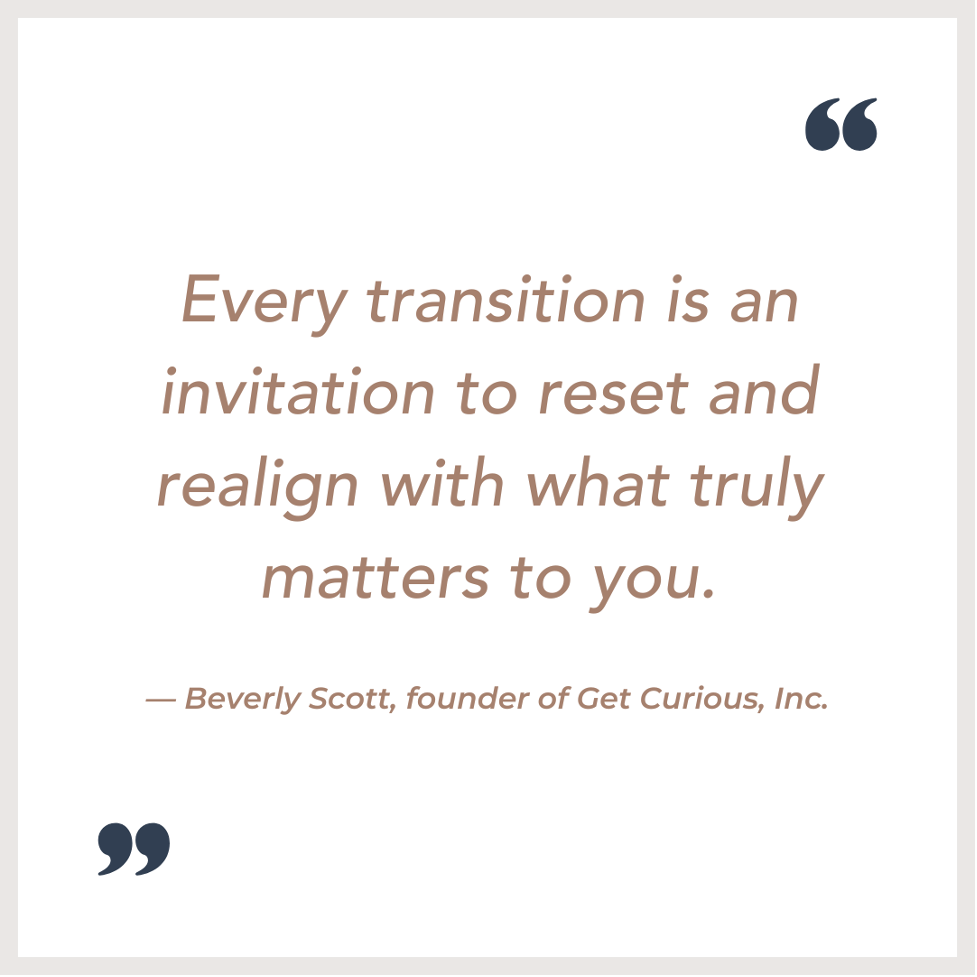
While change can be challenging and uncomfortable, it is also a catalyst for growth and self-discovery. Our goal isn’t to avoid transitions but to navigate them with intention, transforming each shift into an opportunity for renewed well-being.
I’d love to hear which of these strategies resonates most with you or what wellness habits have helped you navigate major life transitions.
Contact me to continue the conversation!
Looking for more support during your life transitions? Visit Wellness Intelligence™ to learn how you can thrive during times of change, or schedule a free discovery call with me to explore how I might best support your wellness journey.





